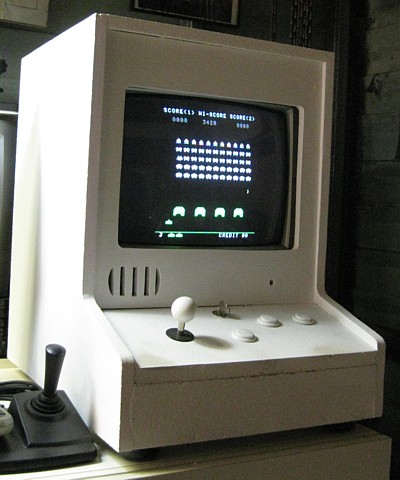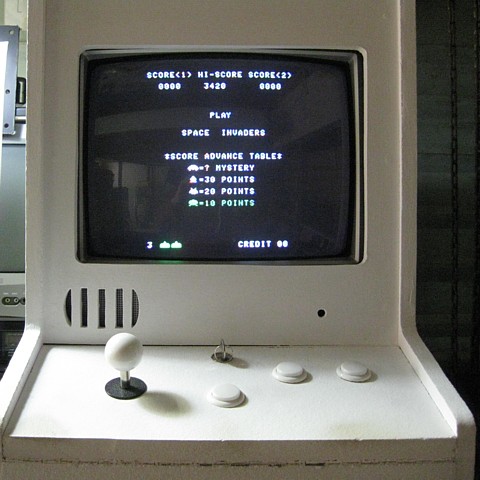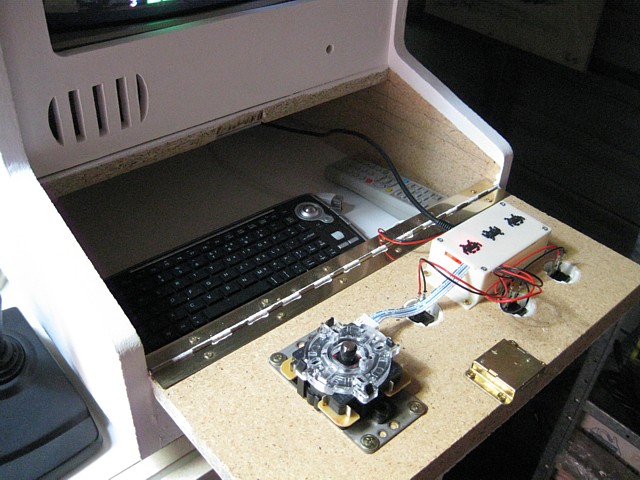
This is the little project which rekindled my interest in Arcade Games. It taps into my memories of early Video Arcade Machines as a teenager.
In the late 70's and early 80's there were no flashy video arcades where I lived. I do remember seeing some Electro-Mechanical arcade shooters and the like, as a kid in places like the Manly Fun Pier and pinball machines scattered around milk bars and fish 'n chip shops.
I wasn't into pinball and didn't have the money to hang around milk bars playing the machines anyway. Occasionally my family would go bowling at the nearest bowling alley, in the basement of the Totem shopping center at Balgowlah and that's where I first discovered machines like Space Invaders, Galaxian and Galaga.
Even then I didn't put much money into them, just a couple of plays at a time to whet my appetite. It was the technology which interested me and seemed as space age as the games themselves. By 1982 I had finished school and was working as a trainee computer technician in a more serious industry - media so games were no longer at the centre of my attention.

Skip forward about 35 years and I've done lots of computer work as well as professional electronics. Games I've played along the way have mostly been on PC. I'm experimenting with Retropie on a Raspberry Pi 2 Model B and revisit some of the earliest arcade games in MAME. The memories are great but I realise they're out of context on a PC keyboard and LCD monitor.
The graphics are too good, for a start. The screen is too flat and there isn't the eerie glow to the image that a CRT has. And I miss the controls, the slightly beaten up cabinet with the artwork, the joystick and the big buttons. It's obviously time to make a retro arcade cabinet for the Pi.
And here's the result. Not quite finished as the plan is to brush up on the signwriting technique and hand paint the artwork in a tribute to Taito's iconic Space Invaders. Apart from that the cabinet is done, it is simple but quite effective.

The cabinet is a bartop unit, made of particle board and designed to resemble the top part of the legendary Taito machine. The monitor is just a 14" Colour TV with an old style curved CRT. The Raspberry Pi connects using its standard resolution AV (composite video) output. In a nod to the original machine the sound comes from some slots in the front panel, in this instance aligned with the TV's internal speaker. The other small hole is to allow the TV's remote control to work.
The control panel uses a 'zero delay' USB joystick controller and the layout has very few controls, like the machine it is modelled on. Fortunately MAME allows each button to be defined more than once so the Player 1 and 2 Start buttons can also be assigned to in-game controls. I 3D printed a little zippy-style box to keep the wiring neat.

When the control panel is hinged open there is space to store the TV remote control and wireless mini keyboard with trackball. A USB extension cable allows games to be easily added from a flash drive. Within Retropie the unit can be operated using the front panel controls alone. The back door is hinged at one side and allows the TV to be placed in position from the rear. It also has some holes near the top for ventilation.
It was while working on this unit that I discovered there are still a few original Arcade Machines which survive, some of which are not working and need to be repaired in order to save them from being scrapped. Those are the machines which I decided to take on as my next projects...
All images and text on this website are Copyright.
Contact: jbtech at telstra dot com